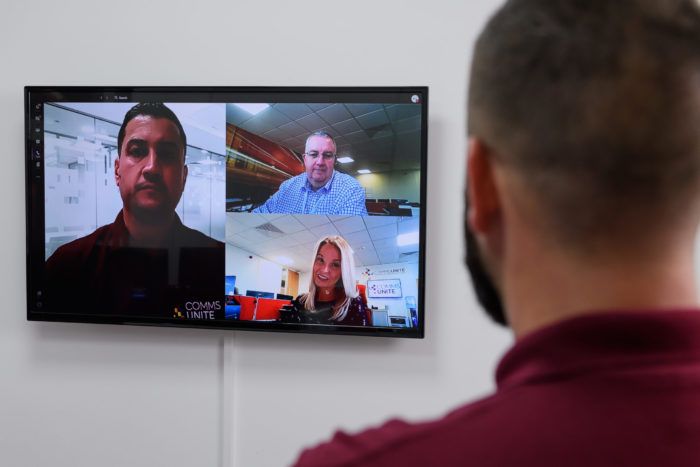
Moving Your Office IT Infrastructure
They say moving home is one of the most stressful things you can do in your life. Well, add phone lines, all your cables and devices, and the rest of your IT infrastructure into the mix, and we’d suggest that moving office is just as bad – unless you work with the right relocation team, of course.
There are all sorts of reasons why you might choose to relocate. Your business might have outgrown your current office space, you could be moving to a better location, or you might even be downsizing as more of your staff work from home. Whatever your motivation, here’s the ultimate office move IT checklist to help you make the move.

The office move IT relocation checklist
Breaking down what might seem like a terrifyingly large undertaking into bite-size chunks can help you see every element clearly and make sure there’s nothing you forget. We’re going to help you consider every part of your IT infrastructure relocation, including:
The reasons for the move and what you want to achieve
There are all sorts of motivations for an office move, whether it’s to accommodate the growth of your business or give you a space that you can customise to enhance your efficiency and processes. Some businesses choose to move to a more prestigious location or building to attract better clients and employees, while others want to enjoy the benefits of enhanced travel connections or a better environment.
Whatever your motivation, you should find a location that can help you achieve your business goals. Given the time and effort associated with an office move and IT infrastructure relocation, you must consider your business’s needs now and three, five and ten years down the line.
Planning your office move
From experience, we know that you don’t want to leave anything to chance. So, you should think about and document everything, including:
- When will all of your infrastructure, cabling, networking, and devices need to be set up and running?
- What parts of your existing IT infrastructure are moving with you and what will you need to replace?
- What new technology will you need to meet the goals of your move and make sure your new office is an upgrade?
- How will your office move affect any projects that are in progress?
- What steps can you and your office relocation team take to limit any downtime as much as possible?
Identifying the costs and drawing up a budget
Relocating your office and IT infrastructure is not cheap, so you need to get it right. There are all sorts of costs to think about, some of which may not be immediately obvious. Once you’ve identified the costs, set a budget so your office relocation team have a better understanding of what they can achieve.
The typical costs involved in an IT infrastructure relocation include:
- Infrastructure improvements
- Storage fees
- Security
- Insurance
- Contract break fees
- Removal team costs
- Connectivity and communications provider fees
- Refurbishment/interior design fees
- Utilities
You also have all the usual costs of an office relocation to consider, such as rental charges, deposits and administrative fees.
Creating your own office move IT checklist
Once you’ve established a budget, the next step is to create a comprehensive office move IT checklist for you and your team to follow. It should include all of the measurable goals along with timescales and details of who is responsible for each task to keep your team organised.
You should:
- Appoint an office move manager – This is the person who is ultimately responsible for the project. You should also assign people who they can delegate tasks to.
- Build advance planning into your timeline – You should sit down with your office move manager at least three months before the deadline to start planning your move. That will give you time to research, delegate tasks and get the logistics in order.
- Establish priorities for all staff – Everyone in the team needs to know what they are responsible for and the deadline. Even if it’s just a small job, involving them in some way will make them feel part of the process.
- Nail down your budget (and allow for a little extra) – Your moving costs can easily outstrip your budget (unless you’re working with an experienced team like Comms Unite). So, nail down your budget but also give yourself a little wiggle room of 10-20%.
- Brainstorm the minor details so you don’t miss a thing – It’s well worth sitting down with your team to discuss the finer details of your move. They’re bound to think of something you’ve missed.
- Determine what outside help you’ll need, especially for IT – Some jobs are best left to the professionals. Are you equipped to safely move and set up all of your IT infrastructure in your new office? The professionals could do in a day what you could take weeks or even months to get right.
Preparing all of your IT equipment
This is the one part of the move that many business owners dread. You need to make a final decision about which elements of your IT hardware and telecoms equipment you’re taking with you and what you’re going to upgrade. This is the perfect opportunity to rid yourself of some of your physical infrastructure and move it to the cloud.
You should also think about telecoms hardware such as handsets and terminals that may need updating and consider the timelines for any upgrades and installations.
Choosing your office telecoms system
Now is also a good time to review your telecoms systems. For example, how many phone lines do you really need, what will happen with voice data and will you keep your existing phone numbers? They’re small details but they all need to be considered. You should also make backups of all your voice and message data before making the move. Finally, think about whether better broadband could help your business grow.
Addressing any security issues during the move
The security of your IT infrastructure should be a priority, both in terms of the physical safety of your equipment and the cyber security risks the move creates. You should write an inventory of all your IT assets and check what equipment your employees are taking home. It’s also worth updating your security policies and giving staff additional training on the safe use of remote systems.
Finally, check your existing contracts with security providers to make sure they’re suitable for your new office and ask your IT and telecoms suppliers about any new security measures you can implement.
Get expert IT infrastructure relocation assistance from Comms Unite
Give us a call on 01473 599020 or email hello@comms-unite.co.uk to find out how we can protect your systems and ensure your new setup will be ready as soon as you move in.



